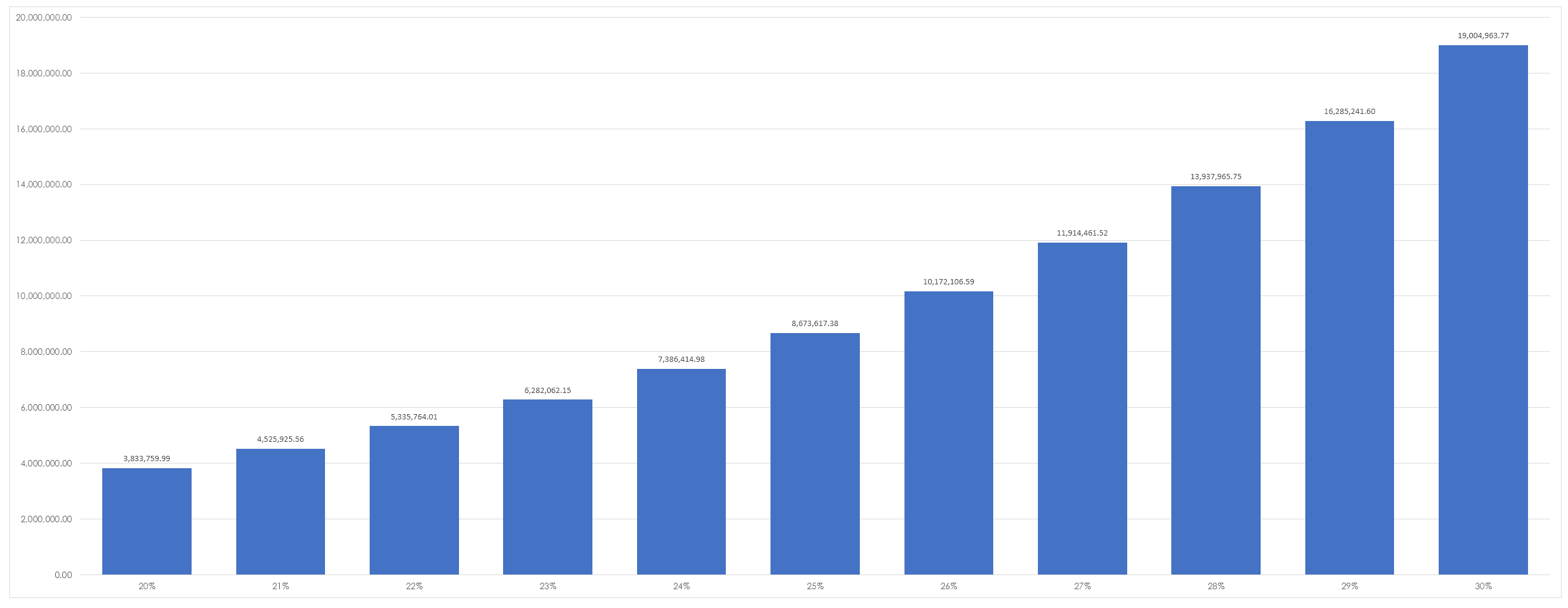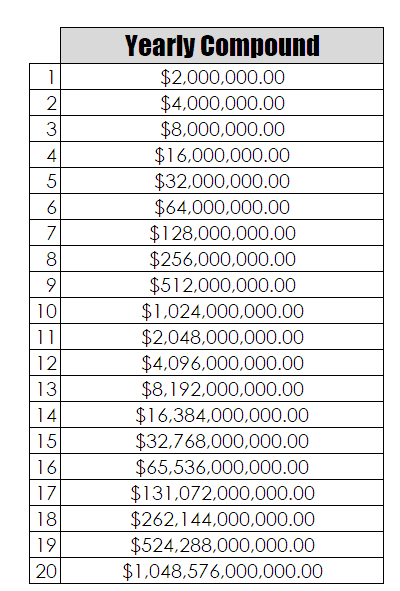I seem to be spending a fair bit of time talking about returns either via email, PM or via the blog. The most common question I get seems to revolve around the simple idea of what can I expect and is X figure realistic. This figure is generally a number that is wholly unrealistic in the grand scheme of things. However a few things need to be squared away before look any deeper at returns. There are two central themes to returns. They are measured on average over time, there will be times when you do very well and times when you dont do so well. This leads naturally to the second point. You will only get what the market can give you. For example if you have a long only commodities strategy and commodities have a few flat years then your returns will naturally suffer because of this. There is nothing that can be done about this – as the saying goes you cannot get blood out of a stone.
In part this conversation was generated by a mentoree for whom I generated the following chart –
This chart tracks a $100,000 investment over 20 years at rates of return ranging from 20% to 30% at 1% increments. Time and compounding win all the time, small increases in return are magnified dramatically. The more incremental gains you can generate either through lowering the cost of your system or improving the control of losses the more your performance will increase. However, the important component here is time – the simple fact of leaving money in the account works in your favour. It seems obvious to say but the more you take out of the account the greater drag this will be on performance. Unfortunately, this point is lost on many as the long term nature of wealth creation defeats most. The majority of investors want instant returns and they want these returns to be out of touch with reality.
I have lost count of the number of times traders have approached me stating that they have been told that it is not that hard to generate 100% pa on a regular basis. To show them the idiocy of this I generally generate a simple table of returns that looks at a starting capital of $1,000,000.00 compounded yearly at 100% for 20 years. The table below shows the results of such an experiment.
As you can see about half way through year 16 you are the richest person in the world and three and half years later you have a trillion dollars in the bank. Intriguingly most are not convinced by this sort of data – they stare blankly at me and ask what the problem is. As I have said before I understand how new traders fall into this trap – the internet is littered with all sorts of promises and if you dont know any better it is easy to get sucked in.
In terms of reality the table below looks at the long term monthly returns of Dunn Capital a long term trend following hedge fund. I have selected them simply because of the depth of their returns and the realistic picture it presents of how trading works.
Those cells coloured red are where the fund generated a return of less than zero for that month. As you can see there are quite a few because thats how trading works – some months are good months and some are bad. Plotting the value of $1 invested gives you a sense of how effective simply sticking with it is.
There are periods where the system runs hot and times when it runs cold and you get drawdowns – this is how all trading systems look. However, the point of this is not to depress people because the great joy of trading is that there is never any upper limit placed on what you can earn. No one will ever ring you up and tell you to stop because you are doing too well. Your success is defined by your skill – some days you will be the smartest person in the room and some days you wont. But provided you dont blow yourself up there will always be another day.









Hi Chris,
I wish the internet and press were full of these reality checks. Great to hear and see there are still a few out there with integrity.
I read some articles a long time ago by a chap named Colin Nicholson. He is one of the very few that actually puts his investments and results up front for his subscribers to see. But the big take for me was his target of around 12% per year compounded. Obviously in bull markets he does better but this is his aim thru both Bull and Bear markets.
I did my own research looking at real estate term deposits and an assortment of other vehicles. And I will wait till the end of my 5 years to determine how effective my investing and trading are going.
But and this is the big but, I have a regular income. And nothing is being used from the trading and investment account. Thereby seeing the true reality of both compounding and my true ability to trade and invest.
Love all of yours and Louise’s pearls of wisdom.
I hope many others appreciate the efforts that the two of you contribute.
Best regards Adrian.